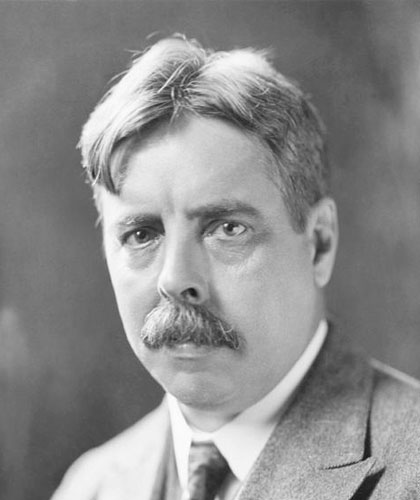Edward Thorndike: The Law Of Effect
Published on June 10th, 2020
Updated on January 2nd, 2024

Edward Thorndike was an American Psychologist. His contributions to the study of behavior most significantly influenced the field of psychology in the early 1900’s. Initially, Thorndike’s research focused on animal behavior. Later on in his career Thorndike’s focus of research shifted to the cognitive functions behind learning. His theories reflect on the concepts of conditioning. Thorndike used the influences of the following principles in his own research:
- Classical Conditioning (John B. Watson, Ivan Pavlov)
- Operant Conditioning (B. F. Skinner)

Thorndike adopted a behavioral approach in his research, and contributed a great deal to the field of psychology. Among his most well-known and influential contributions to the field was the law of effect and the concept of connectionism.
Sponsored by

Choose a therapist to work with and start healing with 20% off from BetterHelp.
Click HereConnectionism
Through the law of effect, Thorndike developed the theory of connectionism. Connectionism suggests that an individual is more likely to show patterns of behaviors that are followed by a form of satisfaction. Accordingly, individuals are less likely to repeat behaviors that result in or cause a form of discomfort, strain or negative consequence.
Thorndike used the theory of connectionism to learn about animal and human behavior. His theory has been applied to learning and education tools. The theory is also used in intelligence and aptitude testing.
As a result of testing and research, Thorndike concluded that learning is significantly affected by cause and effect. Specifically, Thorndike maintained that learning takes place by observing the consequence to an action.
The Law of Effect
The law of effect refers to a method of predicting behavior. Specifically, it refers to animal and human behavior. According to the law, the likelihood of a subject engaging in a repeated behavior depends on the result that comes from the behavior itself. If the subject likes the result of a behavior, they will continue to engage in the behavior. If they do not, then they will not likely continue to engage in the behavior.
The law of effect derives from the principles of classical conditioning and operant conditioning. It uses these two principles to predict the behaviors according to the resulting consequence. The law suggests that if a subject enjoys the outcome of a behavior, they will continue the behavior. If the subject does not like the outcome of a behavior, they will not likely continue to engage in that behavior.
Example: Joey got a new car for his birthday. He enjoys being complimented on his car, so he cleans his car every week. This way, his car continues to look good, so he continues to get compliments.
One night, Joey broke his curfew and arrived home an hour late. His punishment was having his car keys taken away for one week. Joey did not like not being able to drive his car for a week, so it is not likely that he will break his curfew again.
The system that Thorndike discovered from the law of effect has two main parts:
- The Satisfier. Reactions that are followed by a reward would lead to the learned repeated behavior. A reward can be any kind of immediately satisfying consequence. The process is referred to as ‘stamped in’.
- The Annoyer. Reactions that are followed by a punishment would lead to the extinguishing of the behavior. A punishment may be any immediately an annoying or otherwise negative consequence. The process is referred to as ‘stamped out’.
Thorndike noted in his research that negative consequences created less predictable behavior patterns. Positive consequences created more predictable behavior patterns.
Negative consequences were more likely to stamp out the associated behavior. However, predicting that stamp out behaviors would not be repeated was not as reliable as stamp in behaviors. Behaviors that resulted in reward had a high predictability rate of being repeated.
Example: Billy cleans the dishes, and he is rewarded with 5 dollars. It is likely that Billy will clean the dishes again as long as he continues to be rewarded with 5 dollars.
Billy goes into the garage by himself, and is punished with a spanking. He notes that going to the garage alone may result in a spanking, but he does it anyway periodically throughout his childhood. Even though the behavior of going into the garage results in a spanking, his parents cannot reliably predict that the punishment will eliminate the undesired behavior.

The Puzzle Box Experiment
Thorndike started his research on behavior by using animals as test subjects. The law of effect was discovered through research on a cat. Thorndike’s focus of interest during the puzzle box experiment was finding out whether animals can learn. With observing cats in the puzzle box experiment, Thorndike found that animals can not only learn, but also problem solve when confronted with obstacles.
The experimental design Thorndike used was as follows:
- A hungry cat was placed in a box. Cat food was placed on the outside of the box.
- The box was closed with the cat inside. Inside the box, was a mechanism that would open the box. Sometimes it was a string, sometimes it was a button or lever.
- The cats were observed for problem solving skills. They were observed for their ability to remember the mechanism being activated would open the box. There were repeat trials that observed the rate in which the cat was able to locate the lever and open the box themselves.
The behavior that was observed at first was the cat moving around and scratching at the box until it found the mechanism that caused it to open. Once the box was open, the cat had access to its cat food.
The cat would find the mechanism accidentally the first time, but when placed in the same position again, it would remember how to trigger the mechanism and open the box. Each time the cat was placed in the box, it was able to open the box itself at a faster rate than the last trial.
After several trials of the study, Thorndike concluded that the cat’s ability to open the box at a faster rate than the previous trial was the result of associating the behavior with the previous consequence. If the lever is pushed, the box will open, and the cat can get to its food. This confirmed the law of effect, and contributed to the concepts of reinforcement in behavioral activation.
Sponsored by

Find an affordable therapist online with 20% off from BetterHelp.
Click Here






Leave A Reply